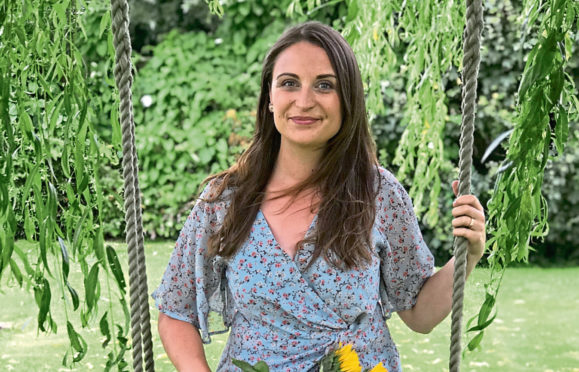
We’re becoming more aware of the importance of good mental health.
Recent research conducted by Interflora found that nearly a quarter of Brits surveyed admit to feeling stressed more than once a day.
With the knowledge that plants are known to have a calming effect on our minds and bodies, Interflora has launched #Mindfloral which is about sharing new ways in which individuals can help their own daily wellbeing.
Gardening therapy is a growing trend for improving wellbeing and transformed the life of Kirsty Ward, mental health blogger and founder of @my_little_allotment
“Two and a half years ago I suffered a huge breakdown in my own mental health after the birth of my second daughter, Mila, now three,” says the 28-year-old mum of two.
“After visiting my GP I was advised to go for cognitive behavioural therapy. CBT was a wonderful therapy option for me, and it got me back on my feet.
“But more importantly it gave me the answer I was seeking, which was a diagnosis of post-traumatic stress disorder (PTSD).
“The diagnosis came as a shock. I had no idea what it was that I was dealing with.
“I’ve never suffered with mental-health issues and to hear it was post-traumatic stress disorder confused me further.
“I didn’t really understand what PTSD was and how I could help myself cope. After some research into what you can do to help yourself, a recurring theme that came up was gardening therapy and how you can use it to improve mental health and wellbeing.
“Nurturing plants is known to have a calming effect on our minds and bodies, and being wholly absorbed in an activity can help us to remove ourselves from the frenetic noise of a fast-moving world.
“It’s like nurturing yourself, and going out and tending to plants is an effective way to be mindful, while walking barefoot through a garden can be a unique way to connect with nature and the earth.
“Wellbeing is a huge part of improving mental health. I’ve found that gardening therapy has been a huge stress-reliever and the best part of it is that you don’t need a huge garden, it’s about helping your mind to slow down.
“Spending just five or 10 minutes in the greenhouse, or a weekend on the allotment, has completely changed my life.
“We all find things that work for us and I want to give you some of my favourite things to do for mindfulness in the garden and out on the allotment.”
1 TAKE A DEEP BREATH – This is proven to calm the mind, lower your heart rate and reduce muscle tension.
Doing this before starting a task can have a positive effect on the task ahead.
2 BE PRESENT/ENGAGE SENSES – To help with my own wellbeing before I start gardening, I like to be present in the moment and engage my senses.
I think about what I can see, smell, touch and taste on the allotment and that way my mind is in tune with what’s going on around me.
3 GROUNDING – Placing hands in soil without gloves, taking your shoes off and walking around the allotment or garden is a way to ground yourself.
Your body soaks up the negatively-charged electrons and doing this will help improve sleep, pain management and stress.
4 SMALL TASKS – I find setting myself small tasks out in the garden is an easy way to make gardening and the allotment become less overwhelming.
Set yourself bite-sized jobs and complete one before moving on to the next. It’s easier to see progress this way and this then gives you a sense of achievement, boosting positivity and mood.
5 GROW FLOWERS FOR WELLBEING – The colour, the scent, the textures; flowers provide us with everything we need to enlighten our senses and are a great way to boost the mood.
As I love growing food you can always try growing edible flowers at home like calendula, borage and cornflowers. So not only can you see, touch and smell the flowers, you can taste them, too!
6 HAVE A GO AT GROWING YOUR OWN – You don’t need a big garden or an allotment space to grow your own.
You can grow your own herbs and chillies on windowsills, balconies and in small urban gardens.
There are lots of ways to make the most of small spaces by growing vertically, in pots and hanging baskets.
The #Mindfloral campaign has been crafted to make a difference in people’s lives, focusing on how we can achieve mindfulness through being in the now, getting rid of everyday distractions and taking a little more “me” time.
For more information, head to the Interflora Instagram TV Channel for the latest #Mindfloral tips, or for more information on the campaign visit https://www.interflora.co.uk/content/mindfloral/
For Kirsty’s blog visit mylittleallotmentsite.wordpress.com/about/

Enjoy the convenience of having The Sunday Post delivered as a digital ePaper straight to your smartphone, tablet or computer.
Subscribe for only £5.49 a month and enjoy all the benefits of the printed paper as a digital replica.
Subscribe